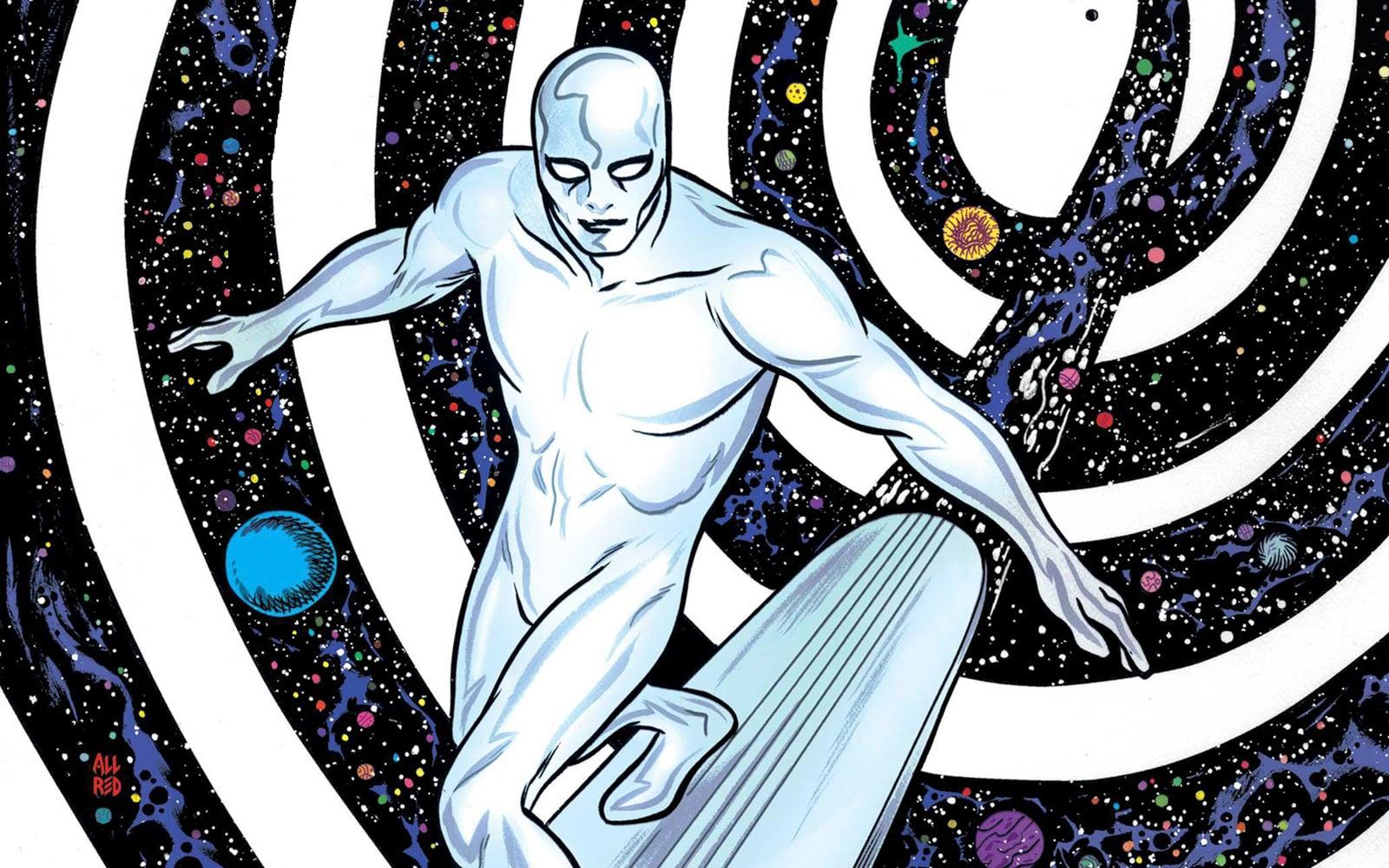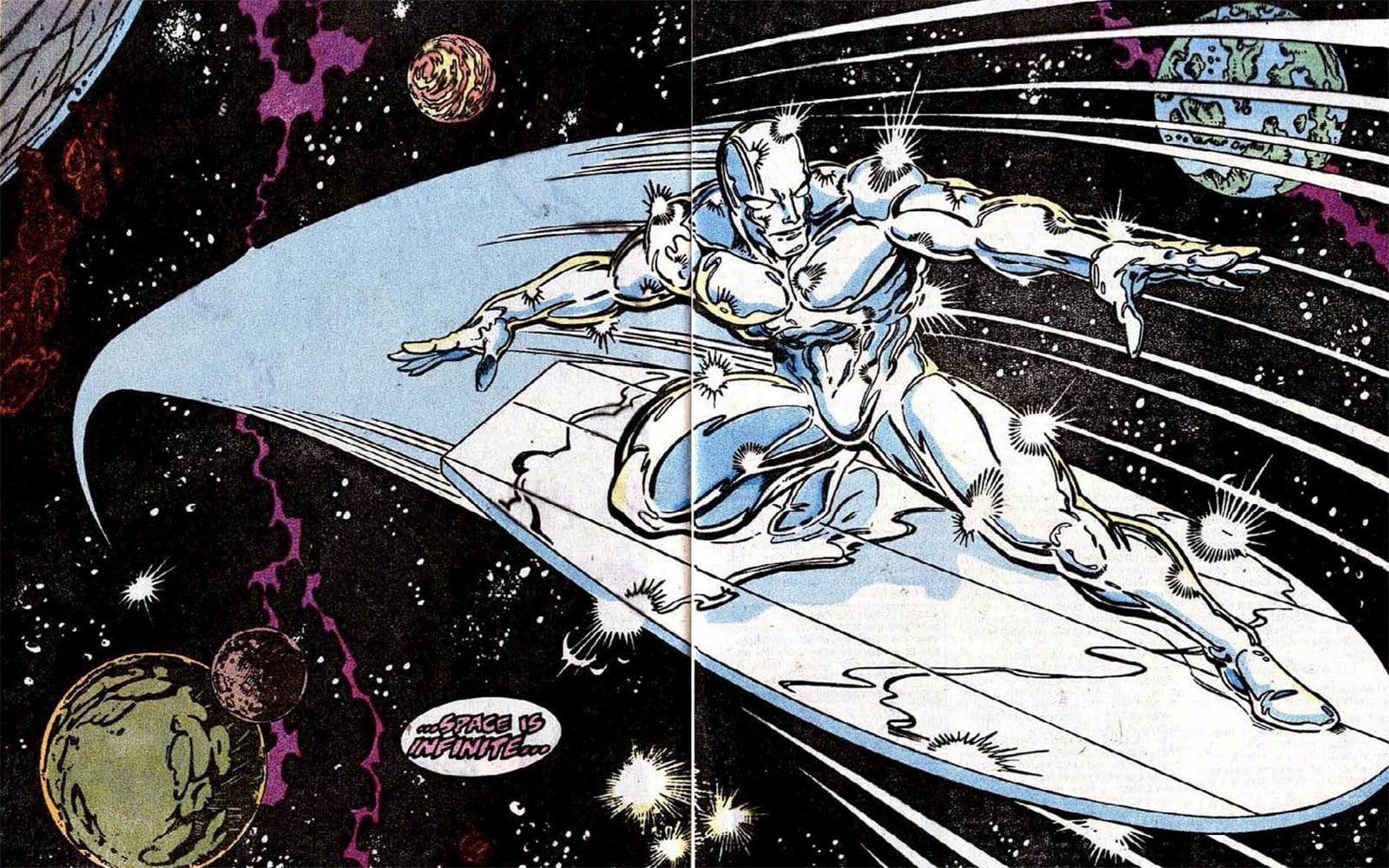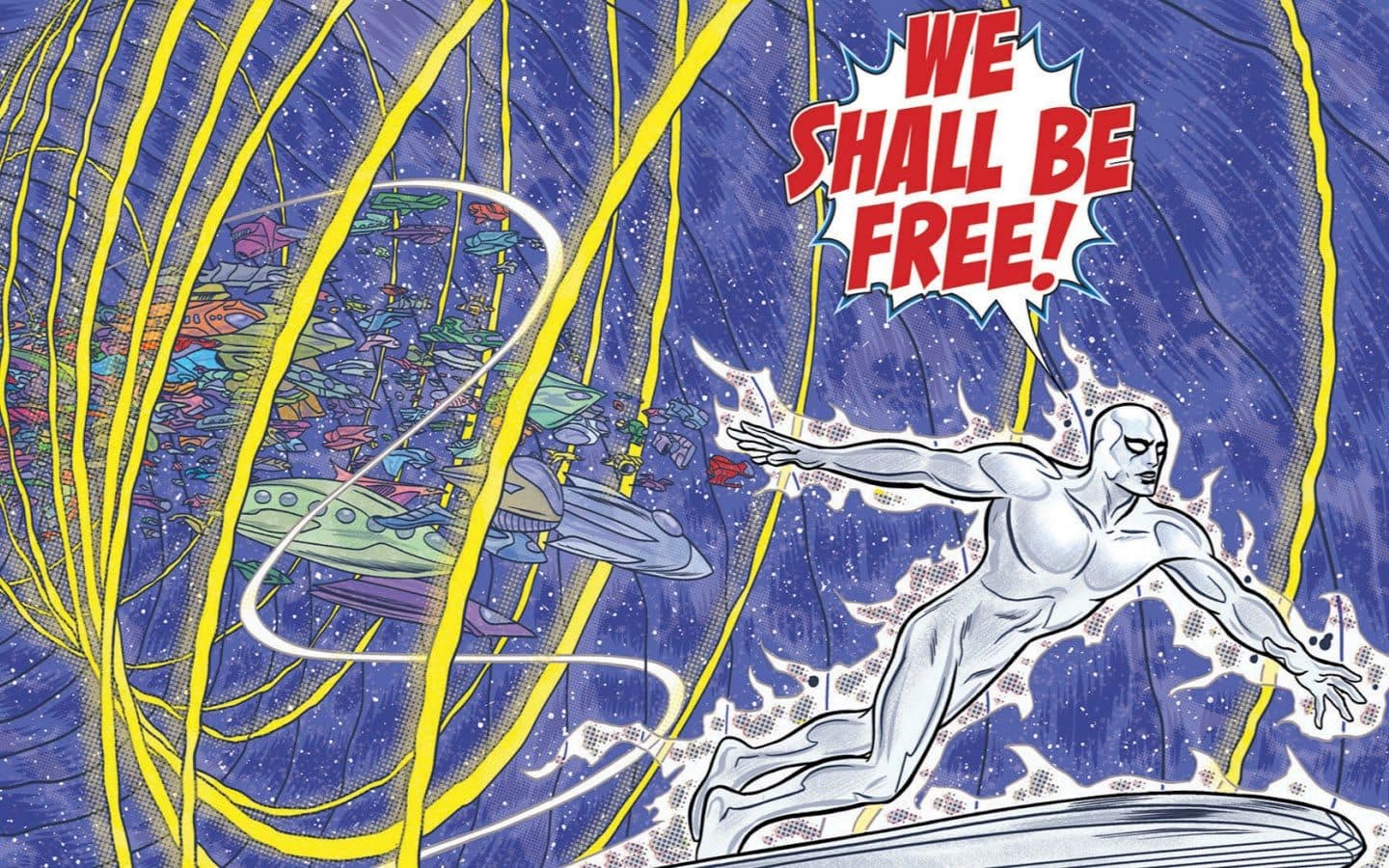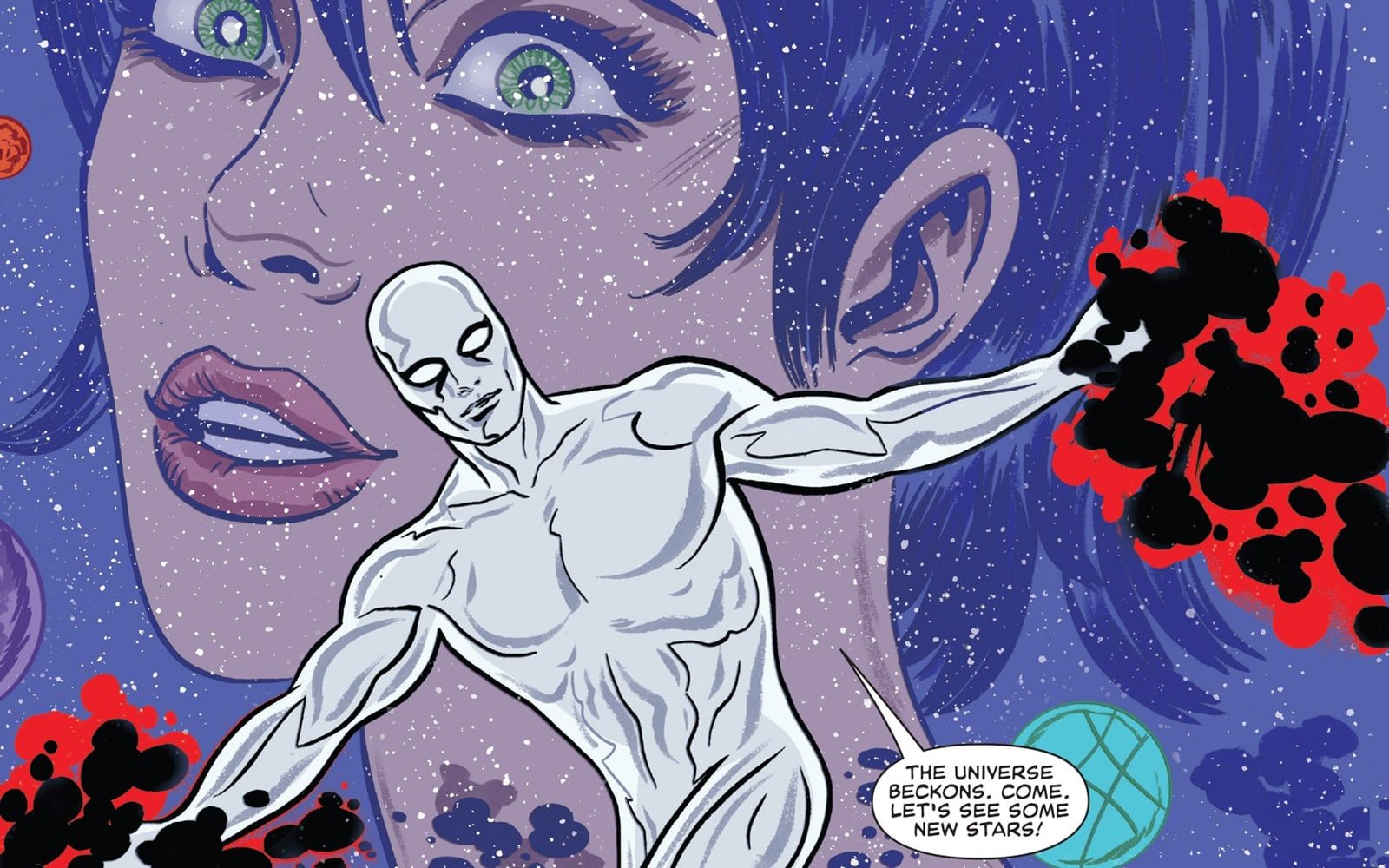Soaring Through the Spaceways With the Silver Surfer (Review)

I’m still not entirely sure why the Silver Surfer became my favorite superhero. But one day in high school, I thumbed through a few issues at a friend’s house, and something just clicked. Maybe the angst and pathos that have long been defining traits of the character resonated with my own brand of high school angst. Maybe the image of a silvery musclebound guy swooping down from the sky on a silver surfboard while shooting energy bolts from his hands seemed particularly bitchin’ that day. Or maybe it represented a nice change from the usual comic book fare that I knew about.
My friends were into the various Spider-Man and “X” titles (which were all going through massive revivals at the time thanks to Todd McFarlane, Chris Claremont, Jim Lee, Whilce Portacio, and Rob Liefeld), but I stuck with the Sentinel of the Spaceways. His innate nobility and immense guilt over his past misdeeds (i.e., finding planets for a cosmic entity to devour) combined with his godlike powers, existential musings, and unique mode of transportation made him stand out. Even after I’d stopped reading superhero comics with any regularity, the character stuck with me.
So much so that when it became clear that the Marvel Cinematic Universe was moving in a cosmic direction, I had hope that Norrin Radd might appear in this new cinematic pantheon of heroes (movie studio politics notwithstanding). And when Marvel Comics announced a new Silver Surfer series following several miniseries — e.g., Silver Surfer: Requiem (J. Michael Straczynski’s non-canonical telling of the character’s death), Silver Surfer: In Thy Name — I knew it was time to get reacquainted with the former herald of Galactus.
The following contains potential spoilers for the Silver Surfer series.
Written by Dan Slott (The Amazing Spider-Man, Batman Adventures, She-Hulk) and drawn by Mike Allred (Madman, iZOMBIE, X-Force), the Silver Surfer’s latest volumes (which wrapped up publication this past October) are a far cry from the Silver Surfer comics of my youth — for better and worse.
In hindsight, I realize how much those older comics were informed by the ultra-grittiness that defined the comic book industry in the late ’80s and on through the ’90s. By contrast, Slott’s Silver Surfer often gets downright goofy. Before Slott, I never would’ve expected a Surfer comic to include a Three Stooges reference, require our hero to find the galaxy’s best ice cream (because he performed a tonsillectomy, natch), have him battle interstellar rednecks, Frenchmen, and sharkmen, or deal with the bathroom needs of his new companion, a young woman from Earth named Dawn.
This lightheartedness can be refreshing, and is of a kind with the offbeat humor found in the highly recommended Unbeatable Squirrel Girl. And yet, I confess that part of me missed the brooding, angst-ridden Surfer as written by Jim Starlin and Steve Englehart.
In one of Slott’s most interesting storylines, the Surfer encounters survivors from the many planets that he led Galactus to consume, and is forced to confront his past sins yet again. But as interesting as it is, this particular storyline never quite achieves the gravitas that it should have. Rather, it feels more like an interlude before Slott can get back to the material he really wants to write, i.e., more outlandish space adventures.
But some of this is also due to Mike Allred’s artwork. Back in the day, I loved Ron Lim’s take on the character. Yes, Lim’s Surfer was packed with bulging muscles as was Marvel’s wont back then, but Lim also gave the character a sleekness and sense of speed that made him seem all the more powerful. For example, check out this double-page spread from issue #31 of Silver Surfer’s third volume, published in December 1989. It’s still what first comes to mind when I hear the words “Silver Surfer.”

By contrast, Allred’s version of the Surfer is simpler and more streamlined, hearkening back to John Buscema’s version, but with a pop art twist. Overall, Allred’s artwork is a perfect match for the lighthearted tone of Slott’s story, from the Surfer’s look to the fanciful alien designs to Dawn’s reactions at the latest predicament that she and the Surfer find themselves in. And he draws some awesome sequences that show off the Surfer’s power, such as when he attacks Galactus by surfing a moon at the planet eater.
However, one aspect of Allred’s artwork that I never quite got used to was how disconnected the Surfer seemed to be from his iconic board. Frequently, when the Surfer is drawn flying through space, he barely seems attached to his board, or seems like he’s about to go flying off at any moment. As an example, consider this scene, where the Surfer leads a bunch of refugee ships out of a time loop.

It’s one of the most powerful scenes in the entire series, and comes after a pretty clever bit of visual storytelling on Allred’s part. But look at the Surfer: he looks less to be triumphantly leading billions to safety, and more like he just tripped over his own board in the middle of deep space. Granted, this might have been a stylistic decision — perhaps to show that the Surfer travels so fast he can barely keep everything together — but it also introduces an awkwardness that can undermine scenes like the one above.
Quibbles aside, there’s no denying the joy and heart that flows through the series, or that it’s clearly a labor of love on the part of both Slott and Allred. They love the character, and even though I may disagree with certain tonal aspects of their work, I can’t dispute that. This love becomes particularly apparent in the series’ final issues.
As Slott and Allred’s series comes to a close, the Surfer and Dawn — who are now deeply in love with each other — attempt to travel back in time so that Dawn can see her father one more time. (He died while she was off having intergalactic adventures.) However, their time travel attempt goes awry, hurtling them back in time before the Big Bang and into the final moments of the previous universe.
Cut off from everything they know, the couple decides to explore this new universe before ultimately settling down. The immortal Surfer uses his powers to fake growing old alongside his beloved, who dies shortly before the universe itself begins to die. The Surfer makes it through the Big Bang courtesy of a scientist named Galan of Taa (who would later become Galactus, thus bringing that aspect of the Surfer’s existence full circle). He also manages to bring along the last remnants of Dawn’s essence, which he uses to create the first light (or dawn, get it?) in the fledgling universe.
But just to make the loss even more poignant, the Surfer must then hide himself for billions of years, merely observing but never interfering, so as to prevent any possible damage to the timeline that might result in him and Dawn never meeting. (Given all of this timey-wimey-ness, it’s no surprise that Slott is a Doctor Who fan. This particular twist also reminded me of Rory’s long, silent watch over Amy Pond in the Pandorica.)

It’s a grandiose and fittingly cosmic way to end this chapter of the Surfer’s story, an end that involves multiple universes, time travel, cosmic entities, and most importantly, a love that spans eons. It is, at its heart, an uplifting and deeply romantic storyline that achieves a nice balance between the Surfer’s inherent loneliness and alienation, and his big, noble, silvery heart.
While this new iteration of the Silver Surfer is often a far cry (both tonally and visually) from the Surfer of my youth, it’s a rewarding and enjoyable read in its own right. (I’m still not sure about that Three Stooges reference, though.)